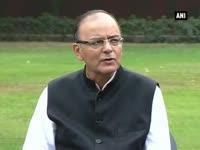
With a view to raising the rate of domestic savings that are in decline, the government on Tuesday re-launched the Kisan Vikas Patra (KVP) investment scheme designed to target the country's poor.
"In the last 2-3 years, the savings rate in the country has declined from a record high of 36.8% to below 30% due to a slowdown in the economy. It is, therefore, necessary to encourage people to save more," finance minister Arun Jaitley said at the launch in New Delhi of the revamped KVP.
"There is an urgent need to raise savings in the country. These savings are then used for nation building," he added.
Besides, KVPs would help poor gullible investors channelise their savings in trusted government scheme instead of Ponzi schemes where hard earned savings disappear, Jaitley said.
Available in the denominations of ₹1,000, ₹5,000, ₹10,000 and ₹50,000, the sum invested would be doubled in 100 months. The instrument has no upper limit for investment and can be encashed after a lock-in period of 30 months.
The KVP would be a bearer instrument without the name of the holder in the first phase, the finance minister said.
"This will be a bearer instrument just like currency and easy to encash," he added.
The certificates can be issued in single or joint names and can be transferred from one person to any other person or persons, multiple times. Transfer facility will be available from one post office to another in India, as well as of nomination.
The certificate can also be pledged as security to avail loans from the banks, and in other cases of need as collateral security.
The scheme, launched earlier in 1988 was very popular, while the percentage share of gross collections under KVP was in the range of 9% to 29% against the total collections received under all National Savings Schemes.
KVP gross collections in 2010-11 (scheme closed in November 2011) were ₹21,631.16 crore.





!['Kaise ho bhai..': PM Modi shook hands with Akshay Kumar at a media summit in Delhi [Watch]](https://data1.ibtimes.co.in/en/full/806317/kaise-ho-bhai-pm-modi-shook-hands-akshay-kumar-media-summit-delhi-watch.jpg?w=220&h=138)











